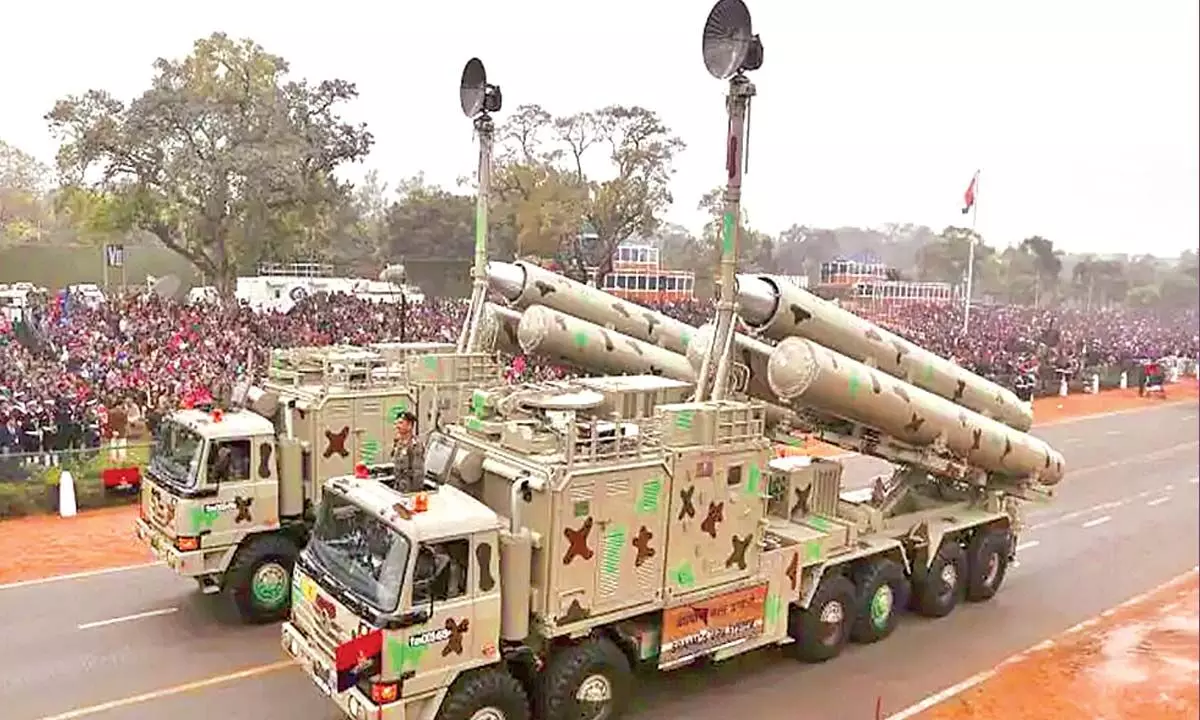Import-dependent Indian defence industry is at the crossroads
The country’s tensions with Pakistan and China largely drive its demand for arms imports, says a SIPRI report
image for illustrative purpose

The Indian industry also faces several other challenges, such as a lack of modern technology, insufficient investment and limited research and development capabilities. The country's defence industry is still heavily dependent on imports, which makes it vulnerable to supply chain disruptions and other geopolitical risks
As Russia, traditionally India's largest arms supplier, fights a protracted war in Ukraine that has just passed the one-year mark, there have been reports in the western media about its difficulties in supplying its military with the necessary hardware.
Russian arms exports decreased to 8 of its 10 biggest recipients between 2013–17 and 2018–22. Exports to India, the largest recipient of Russian arms, fell by 37 per cent, while exports to the other 7 decreased by an average of 59 per cent. However, Russian arms exports increased to China (+39 per cent) and Egypt (+44 per cent), and they became Russia’s second and third largest recipients.
According to the March 2023 report by Sweden’s Stockholm International Peace Research Institute (SIPRI) entitled Trends in International Arms Transfers, 2022, India accounted for 11% of all weapon imports from 2018 to 2022, down from 12% in 2013-17. Imports have come down from $seven billion to $five billion dollars, while the exports shot up from $0.3 billion just five years ago to almost $1.7 billion as of last year.
India's defence industry is at a crucial juncture. The country is one of the world's largest importers of defence equipment, and its domestic defence industry has been struggling to keep pace with the increasing demand for defence products.
“India’s tensions with Pakistan and China largely drive its demand for arms imports,” declares the SIPRI report. Expectedly, Russia remained India’s largest material provider from 2013 to 2022, even though overall purchases from Moscow had dropped from 64% to 45% during this decade.
The Indian defence industry faces several challenges that need to be addressed to achieve the target of becoming a net exporter. One of the most significant challenges is the lack of a captive market in India itself. As a producer and an exporter, the country should have a good captive domestic market, which becomes its selling card to other countries.
Defence technology will always remain an instrument of foreign policy. If India wants to occupy a rightful place in the committee of nations, it cannot afford to be an importer of security. The country’s private players should collaborate with PSUs in co-production of defence aircraft, helicopters, ships, submarines and drones. The second reason for this is that India is looking at creating a strong defence industrial base in the country.
However, the government faces a significant challenge in achieving this target. The defence budget only increases by seven to nine per cent on an average every year. To fill that gap, only exports can help the country grow from today's $11 billion to $25 billion in the next four to five years.The Indian armed forces must support the domestic defence industry by purchasing equipment and products manufactured indigenously. Another significant challenge is the long gestation period for developing and manufacturing defence equipment. Everything has a cycle; everything has a timeline, and five to 15 years later, the country will go into critical stages again and again. The enemy will not wait for the country to be fully armed, rather they will strike at the most vulnerable time. History has shown that after 1962, Pakistan tried to do that in 1965.
The Indian industry also faces several other challenges, such as a lack of modern technology, insufficient investment and limited research and development capabilities. The country's defence industry is still heavily dependent on imports, which makes it vulnerable to supply chain disruptions and other geopolitical risks.
The gestation period for the private and homegrown industry to meet those challenges and develop that equipment has been taken into consideration. The second thing that has happened is that the army has become more open and interactive with the industry of what it wants and has started getting involved at different stages. The Make in India defence programme has also helped a lot of people who have come at the senior level to show the right direction to the concerned dstakeholders.
India's defence exports have both challenges and opportunities. The government has initiated several steps to encourage defence production and exports. However, the critical challenge is to bridge the gap in meeting the requirement with top-of-the-line equipment.
This requires addressing various issues such as technology transfer, quality control, and cost competitiveness. To ensure quality control, the Indian defence industry must adhere to stringent standards, and the government must facilitate the development of robust testing and certification mechanisms.

